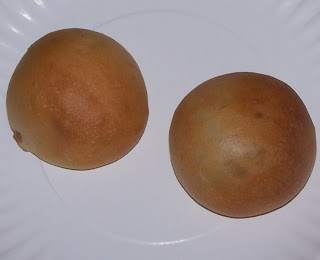
I’ve been eating hamburgers all my life, and I’ve eaten them all over the world. Whether here in the United States, in Europe, or in Asia, I've enjoyed some excellent burgers.
The hamburger sandwich is unique, because you can eat it as plain or ostentatious as you want, and still call it a hamburger. I have a very good friend who wants nothing more than the meat inside a bun. No ketchup, mustard, mayonnaise, pickles, onions, or anything else is required by him. When he orders it, he simply states, “I’d like a hamburger, plain.” He’s always questioned after he gives the order, and always has to repeat, in different words, that he wants the bun and the beef, and nothing more.
The traditional “American Diner” hamburger of the 1940’s was a patty of ground beef on a toasted or grilled buttered bun, topped with onions. Perhaps pickles or relish were added, and maybe, if ordered and available, tomato and lettuce. Condiments of mustard and ketchup in plastic squirt containers were on the counter to be added by the customer.
Other variations appeared during the 1900’s. Small and inexpensive hamburgers on buns the size of dinner rolls, steamed, in and around onions, became popular. In the 1960’s, the chain hamburger restaurants grew to unbelievable fame and fortune. Along the way, there were regional specialties like the Springfield, Illinois, “Horseshoe” and the Midwest “Loose Meat” sandwich.
“Garbage Burgers,” beef patties topped with literally everything you can imagine eventually came on the scene, and then later, those “Yuppie Burgers,” vegetable “hamburgers,” covered with guacamole, avocado, and who knows what other things that are supposed to be healthy for you.
I’ve seen it all with respect to hamburgers. But, I have to tell you, in all honesty, I’ve never seen anything like the “Cheddar Pour Burger” in my entire life. While the burger itself is hiding just beneath the bun, the fried cheese spreads out far and wide. This sandwich is, as far as I can tell, only available at J&J Barbeque and Burgers, in Cedar Park, Texas. If it's available elsewhere, I've never seen nor heard about it.
I don’t know how it is cooked, because it is prepared by grill cooks out of sight of the customers. But, speculating as I often do, it looks like they add a large amount of cheddar cheese over the hamburger, allowing it to spill way over onto the hot grill, where it fries into a crispy and chewy topping. When served, it looks like a derby hat, or a flying saucer with french fries on the side. You can order it in several sizes and get whatever toppings you want with it. I got the smallest size, and at least for me, it was almost too much to eat.
This is one distinctive and delicious burger, and if you find yourself in Cedar Park, it's worth giving it a try.










































